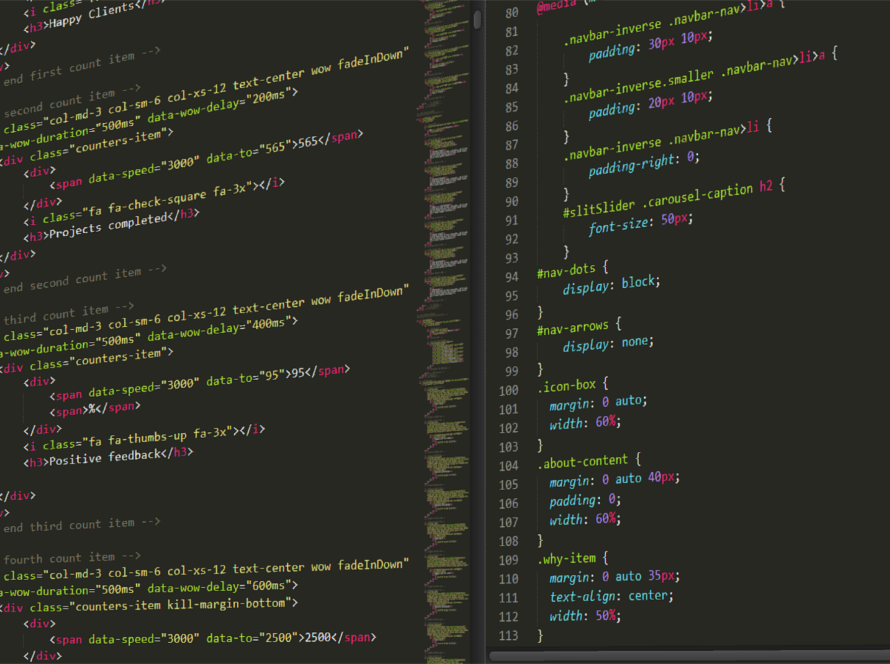Generated by Contentify AI
- Introduction
- The Evolution of CSS in Website Design
- Key Principles of CSS for User Experience
- Optimizing CSS for Mobile Responsiveness
- CSS Animation Techniques for Enhanced User Engagement
- Conclusion

Introduction
CSS plays a crucial role in shaping the user experience design of websites. It has evolved significantly over the years, offering web designers a range of tools and techniques to enhance the visual appeal and functionality of their creations. By leveraging key principles of CSS for user experience, designers can create seamless and intuitive interfaces that captivate users. Optimizing CSS for mobile responsiveness ensures that websites are accessible and user-friendly across various devices, further enhancing the overall user experience. Additionally, CSS animation techniques add a dynamic element to websites, increasing user engagement and interaction. In conclusion, the impact of CSS on user experience design cannot be overstated, as it serves as a valuable tool for creating visually appealing, functional, and engaging websites.
The Evolution of CSS in Website Design
CSS has revolutionized website design, offering a diverse set of tools and techniques that significantly impact user experience. As CSS has evolved, designers have been able to create visually stunning and functional interfaces that cater to the needs and preferences of users. By following key principles of CSS, designers can ensure that websites are not only aesthetically pleasing but also intuitive and easy to navigate. Mobile responsiveness is a crucial aspect of user experience design, and optimizing CSS for different devices ensures a seamless and enjoyable browsing experience. Integrating CSS animation techniques further enhances user engagement, making websites more interactive and dynamic. In essence, the evolution of CSS has had a profound impact on user experience design, empowering designers to create websites that are both visually appealing and user-friendly.
Key Principles of CSS for User Experience
CSS has profoundly influenced user experience design by providing a powerful set of tools and techniques for web designers. The evolution of CSS in website design has enabled designers to create visually appealing and functionally rich interfaces that enhance the overall user experience. By incorporating key principles of CSS, designers can craft seamless and intuitive user interfaces that captivate and engage users. Optimizing CSS for mobile responsiveness ensures that websites are accessible and user-friendly across various devices, further enhancing the user experience. CSS animation techniques add an interactive element to websites, increasing user engagement and creating dynamic user interactions. In conclusion, the impact of CSS on user experience design is undeniable, as it empowers designers to create compelling and user-centric websites that leave a lasting impression on visitors.
Optimizing CSS for Mobile Responsiveness
Optimizing CSS for Mobile Responsiveness is a critical aspect of enhancing user experience design. With the proliferation of mobile devices, ensuring that websites are responsive and user-friendly across various screen sizes is paramount. By utilizing CSS techniques such as media queries and flexible layouts, designers can create websites that adapt seamlessly to different devices, providing a consistent and optimal user experience. Mobile responsiveness not only improves usability but also boosts user engagement and satisfaction. By optimizing CSS for mobile responsiveness, designers can effectively reach a broader audience and deliver a positive user experience, ultimately contributing to the overall success of the website.
CSS Animation Techniques for Enhanced User Engagement
CSS Animation Techniques for Enhanced User Engagement
In the realm of user experience design, CSS animation techniques play a pivotal role in enhancing user engagement. By leveraging CSS animations, designers can create visually captivating and interactive elements that draw users in and encourage exploration. These animations bring a dynamic quality to websites, making interactions more engaging and memorable. Whether it’s subtle hover effects, smooth transitions, or eye-catching animations, CSS allows designers to add depth and personality to their designs, ultimately enhancing the overall user experience. By incorporating CSS animation techniques thoughtfully and strategically, designers can create websites that not only look visually appealing but also provide a seamless and delightful user experience.
Conclusion
CSS plays a crucial role in shaping the user experience design of websites. It has evolved significantly over the years, offering web designers a range of tools and techniques to enhance the visual appeal and functionality of their creations. By leveraging key principles of CSS for user experience, designers can create seamless and intuitive interfaces that captivate users. Optimizing CSS for mobile responsiveness ensures that websites are accessible and user-friendly across various devices, further enhancing the overall user experience. Additionally, CSS animation techniques add a dynamic element to websites, increasing user engagement and interaction. In conclusion, the impact of CSS on user experience design cannot be overstated, as it serves as a valuable tool for creating visually appealing, functional, and engaging websites.






